An all-time classic of the literature is Alar and Juri Toomre’s 1972 ApJ study of colliding galaxies. With an exceptionally simple physical model — the restricted three body approximation, in which test particles orbit in the joint potential provided by two massive bodies on a conic 2-body trajectory — the Toomre brothers were able to construct startlingly plausible explanations for bizarrely irregular galaxies such as the Antennae.
One is hard-pressed to think of a better example of seeing the essence of a manifestly complicated phenomenon so precisely nailed by a simple model. The take-away lesson seems to be: Keep an eye out for situations in which glorious non-linearity has had of order one Lyapunov time to unfold.
ApJ 178, 623 also presents some of the finest astronomical diagrams ever. They are masterpieces of visual scientific communication. Every single detail conveys information, and nothing is superfluous.
In 1998, when I was a post-doc in Berkeley, my working routine was considerably less hectic than it is now. On the foggy morning of May 29th of that year, I remember buying a copy of the New York Times, and settling in at a Cafe on Telegraph Avenue for a relaxed 11AM coffee. A picture and a slew of familiar names jumped off the front page:
The story, which became a huge media event — even President Clinton made a passing mention of it — stirred up a uniquely unsettled, uniquely urgent feeling of being completely involved and completely left out all at the same time. A runaway planet clearly would have formed via gravitational instability, and I had spent several years studying gravitational instabilities for my PhD thesis. I gulped down my coffee, scooped up the paper and ran to my office in Campbell Hall. The phone was ringing when I got there. Doug Lin was on the line, buzzing with excitement. “It’s a tidal tail! Look at Alar’s ’72 paper!”
There was not a moment to waste… Doug called the editor at Science and informed him that we had an important interpretive result in the works. I stayed up all night putting together SPH simulations. It seemed completely feasible that one could explain the observation with a collision between two protostellar disks, in which the runaway planet formed via gravitational collapse in the tidal tail. We got the paper off to Science in short order, and boy was it exhilarating!
The Toomre brothers’ influence soaks right through the figures that I made for our paper. Thirteen years on, they remind me of listening to a cover of Sympathy for the Devil done by a competent Stones tribute band.
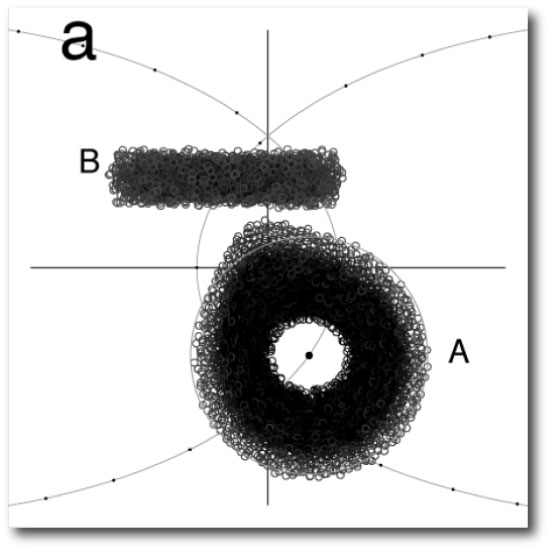
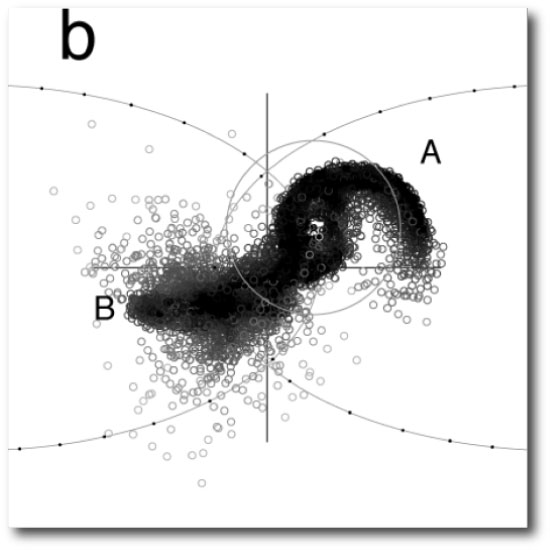

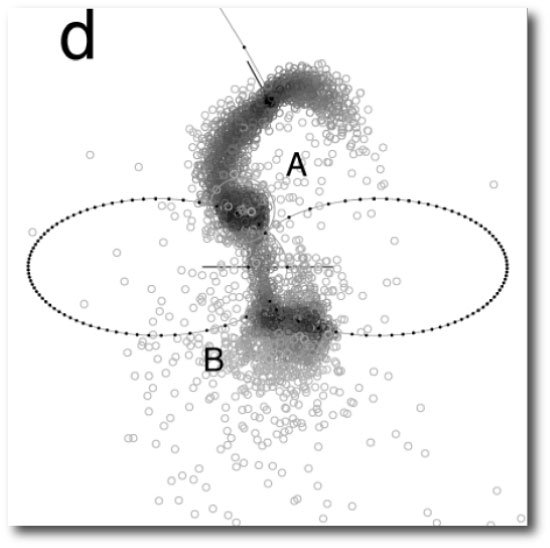

Sadly, a year or so later, it became clear that the TMR-1c runaway “planet” is, in actual fact, an unfortunately placed background star, and the TMR-1c fiasco is commonly used to illustrate the flaws in the publication by press conference model. Our Science paper has languished in obscurity, to the point where one can extract it from behind Science’s formidable pay wall with only a modestly compromising registration agreement to receive e-mail and no money down…
But hope springs eternal. Like everyone else in the community, my eyes lit up upon reading the recent microlensing result that the galaxy is teeming with of order 200 billion rogue planets. Processes like the one that we outlined in our paper may well be operating after all…

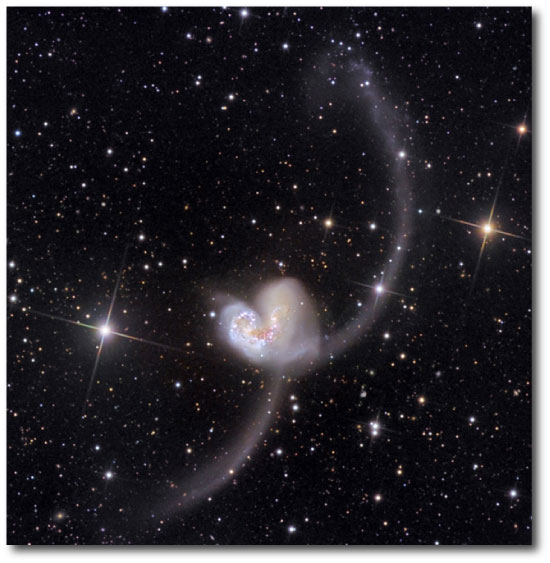
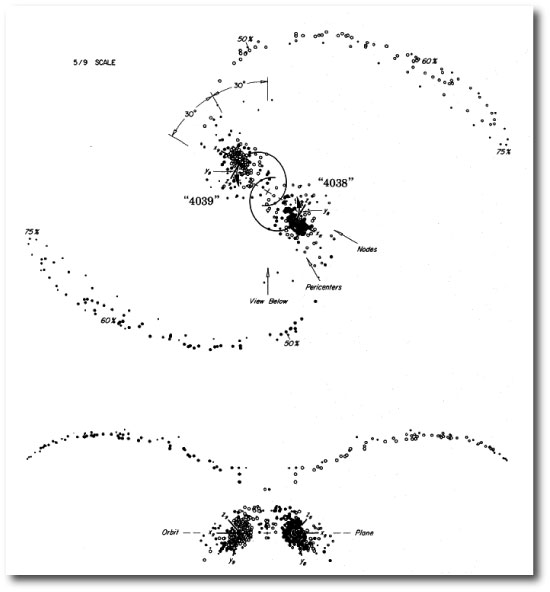
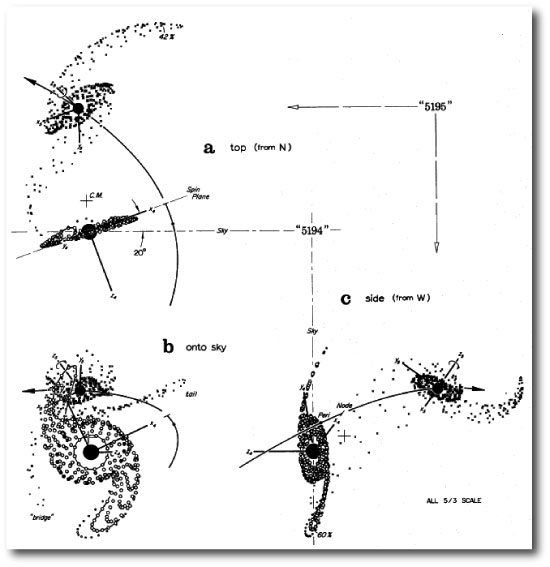
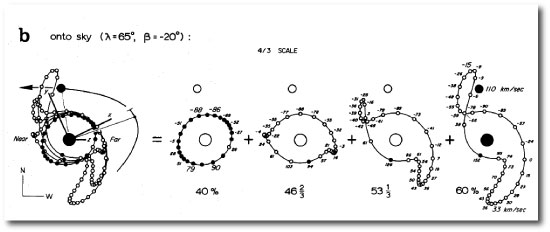
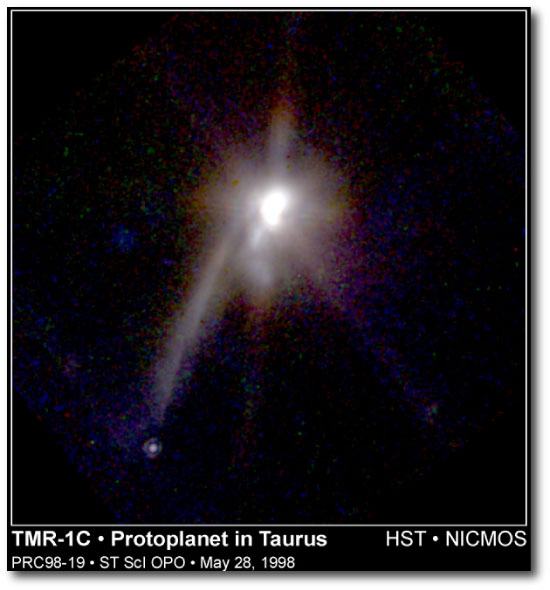
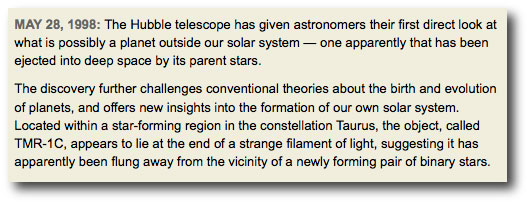
Interestingly, it looks like TMR-1c may be a genuine protoplanetary candidate after all. After this post went up, James Guillochon alerted me to two recent articles that cast doubt on the background star interpretation:
– Riaz and Martin. Large Amplitude Photometric Variability of the Candidate Protoplanet TMR-1C. arXiv (2010)
– Petr-Gotzens et al. The circumstellar environment of the YSO TMR-1 and a revisit to the candidate very low-mass object TMR-1C. arXiv (2010) vol. astro-ph.SR
or not, in terms of hundreds of millions of rogue giant planets. Why not comment directly on the possibility that this micro-lensing result is actually valid?
These types of simulations have always seemed like a great opportunity for citizen science. I’ve seen some “galaxies colliding” screen savers that run in 2d, a real 3D one that actually does science would be awesome.